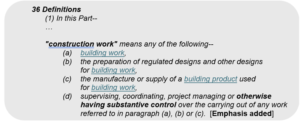Deflecting Deregistration – Pursuing a Deregistered Defendant
Companies are increasingly surrendering to deregistration as a result of a multitude of factors, with lawsuits likely high on this list. What is important to acknowledge, however, is the turmoil this creates when these companies are seemingly riddled with potential claims against them. While deregistration alludes to the prospect of reaching the end of the road for liability claims, the Corporations Act [1] might just be of assistance.
For this we need to focus on section 601AG of the Corporations Act [1] which clearly states that “a person may recover from the insurer of a company that is deregistered an amount that was payable… under the insurance contract”. Two conditions must be satisfied to meet this requirement:
- The company had liability to the person; and
- The insurance contract covered liability immediately before deregistration.
Relevant factors in the operation of section 601AG
In addition to these considerations, case law has helped shape the understanding of this section.
The time immediately before the deregistration is critical: As the two conditions are expressed in the past tense, the inference is that the time for determining “whether the deregistered company had a liability to the person claiming, and whether the insurance contact covered that liability, is immediately before deregistration” [2].
It is not necessary to have a judgment against the deregistered company before making a 601AG claim: Insurers have repeatedly made unsuccessful attempts to argue that liability existed only when a judgment or awards had been made against the insured company [3]. In Hutchinson v ASIC, for example, the court held that the relevant liability was one where the claimant had “a fully constituted cause of action against the company” [4]. Notably, it was decided in Tzaidas v Child & Ors that all that was needed to be proved in a case of secondary liability was that the company was a joint tortfeasor immediately before deregistration [3].
The company must be deregistered and not in the course of being wound up: if the company is in the process of being wound up rather than deregistered, there is no action available under section 601AG [4].
Judicial consideration of section 601AG
Nicholas v Astute Hire Pty Ltd [2015] NSWSC 711: This was a personal injury claim, and the plaintiff joined the public liability insurer for the company (which was deregistered) under section 601AG. The insurer opposed this, denying that the insurance policy covered any such liability immediately before deregistration. Ultimately, the court allowed the insurer to be joined emphasising that liability must exist immediately before deregistration – at a prima facie level the insurance policy appeared to cover the insured’s potential liability to the worker. The court determined that it was the policy held at the time of deregistration that was relevant.
Young Investment Group Pty Ltd v QBE Insurance (Australia) Limited [2019] WASC 74: The plaintiff commenced proceedings against the insurer under section 601AG as the relevant policyholder had deregistered. The insurer did admit that the policyholder had a liability to the plaintiffs at the time of deregistration, and that the insurance covered the policyholder’s liability to the plaintiffs. However, the insurer claimed that this was subject to the application of an exclusion, meaning that the conduct which had led to the claim was committed by an authorised representative of the policy holder but that they acted in a manner which was excluded. This argument was succinctly rejected by the court, stating that the endorsement deemed the policyholder’s authorised representative to be an employee and therefore covered by the insurance policy.
Considering section 601AG
To recite the words of Ipp JA, “the purpose of the legislature in inserting s 601AG in the Corporations Act is to require the insurer of a deregistered company to stand in the shoes of the company to the extent necessary to allow creditors of the company to recover from the insurer whatever amounts they were entitled, by force of law, to recover from the company” [5].
And so, when faced with the brick wall of deregistration, it is critical to consider the power section 601AG holds in ensuring that plaintiffs can recover from deregistered defendants.
Reference List
[1] Corporations Act 2001 (Cth).
[2] Alamario v Allianz Works Compensation (NSW) Insurance Ltd (2005) 62 NSWLR 148, [19].
[3] Tzaidas v Child & Ors [2009] NSWSC 465, [25].
[4] Hutchinson v ASIC [2001] VSC 465.
[5] Alamario v Allianz Works Compensation (NSW) Insurance Ltd (2005) 62 NSWLR 148, [19].



